When keeping goldfish, a time comes when you start wondering whether they really need a heater or not.
Generally, goldfish are cold water species, so it is not necessary to have heaters for them. However, adding a water heater is important, especially if you have fancy goldfish and want to maintain a stable temperature.
Read on till the end as I share more on what temperature goldfish need, a scientific study on temperature tolerance of goldfish, and more to help you decide what will be best for you.
In a hurry? Here’s the best aquarium heater for any aquarium, perfect for all fish, including goldfish:
What Temperatures Do Goldfish Need?

The ideal temperature for goldfish in a tank is 68 °F – 74°F (20°C – 23°C). So unless your tank water temperature remains way below that range, you will not need a heater, in general.
Goldfish Can Even Withstand Near 0°C Temperature
A study was done (about the temperature tolerance in goldfish) in which researchers calculated the lower and upper temperature of 240 goldfish.[1]
First, the goldfish were collected from Pet Stores in North Texas. Then, they were placed in aquaria filled with dechlorinated Denton Tap water.
All the fish were fed with Tetra-Min flake food every day.
Researchers studied the temperature tolerance of goldfish at constant acclimation temperatures of 5, 15, 25, and 35 degrees celsius. And the critical thermal methodology was used in this process.
The Critical Thermal Methodology (CTM) has been used to measure the temperature tolerance of various fish species.
In this procedure, the fish are given a constant, continuous, and linear raise or reduction in temperature until a near-lethal but sub-lethal stage arrives. This stage is termed as CTM endpoint (CTMax or CTMin).
The CTM endpoint is a temperature at which the fish starts making disorganized (locomotory) movements and loses the capability of leaving the conditions that can lead to death.
In this study, the ultimate CTMax for Goldfish was found to be 43.6°C. This result makes goldfish one of the highest upper temperature tolerating fish.
The mean CTMin in this study for goldfish was found to be 0.3°C. But the researchers also highlighted that it was difficult to achieve zero degrees celsius or lower temperatures in their CTMin trials. In reality, goldfish can even tolerate temperatures equal to or less than 0°C.
One of the causes why goldfish are so widespread throughout the world, is their capability to tolerate lower temperatures.
And it is noteworthy that although many tropical fish have upper-temperature tolerance equal or even higher than goldfish, they don’t have enough ability to lower temperatures.
So, at what temperature can goldfish survive? Typically, goldfish can survive static temperatures between 0°C and 41°C. They are highly eurythermal and can tolerate a wide range of temperatures.
However, there are several reasons why you should consider adding a heater for your goldfish.
How Does A Heater Impact Goldfish Tanks?
The basic function of an aquarium heater is to warm up the aquarium water when turned on.
The heaters are designed in a specific way to get turned off automatically when the required temperature is achieved.
In the same pattern, the heater turns on when the water becomes cold to maintain the desired temperature again.
Thus, if you want to ensure your goldfish tank’s temperature remains stable, using an aquarium heater can be quite helpful.
Common Goldfish Vs. Fancy Goldfish: Temperature Requirement
In the aquarium hobby, there are different varieties of goldfish, like the common goldfish, the oranda, the ranch, and so on.
Out of all the varieties, the common goldfish are considered the hardiest.
They are a perfect fit if you are looking for goldfish that can survive in outdoor conditions.
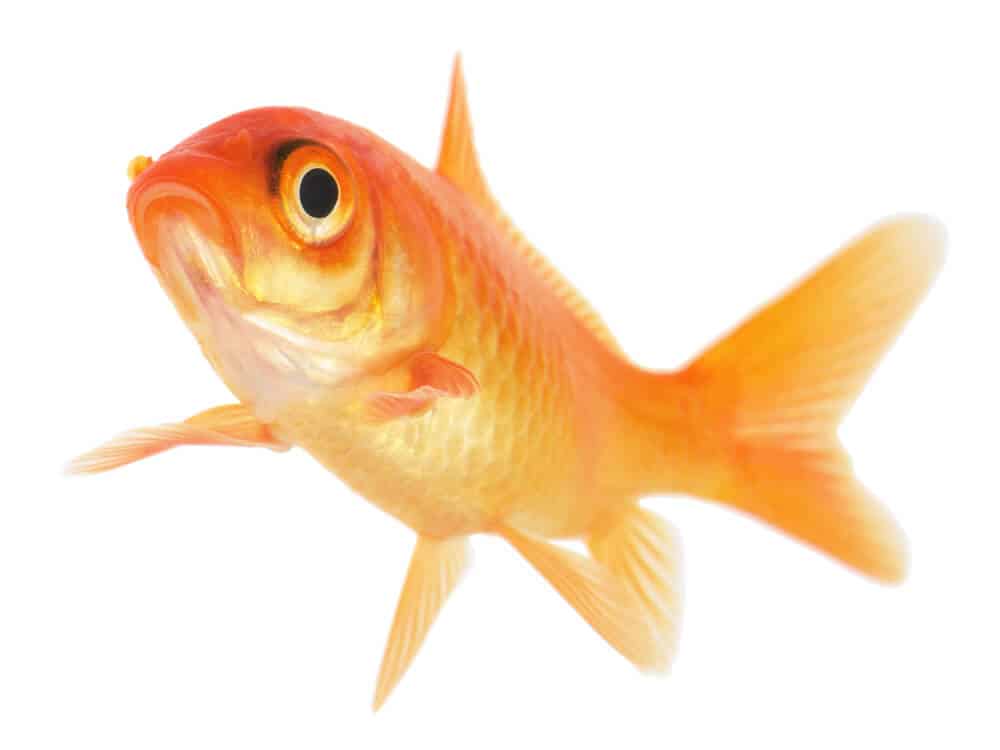
Common Goldfish Brief Overview:
- They have an elongated body and short, single tail
- The most common goldfish type and therefore the name Common Goldfish.
- Also, they are known as Feeder Goldfish, and all goldfish varieties are developed from them.
- Common goldfish come in a variety of colors like red, orange, yellow, white, brown, black, and bluish-gray.
Common goldfish can survive near-freezing temperatures. Moreover, except for the color and shape, there’s no other difference between the common goldfish and its living ancestor.
In short, if you have a common goldfish, you don’t need to worry about heaters in the tank.
However, if you have fancy goldfish breeds, a heater is worth considering to ensure they are in their best health.
In the case of goldfish, the term fancy indicates that the goldfish has double caudal and anal fins. The fancy goldfish are bred in a way that they have the physical traits that the single tails don’t possess.
The double-tailed or fancy goldfish are the most popular and most expensive varieties of goldfish you can have. And they add a glamorous look to your aquarium.
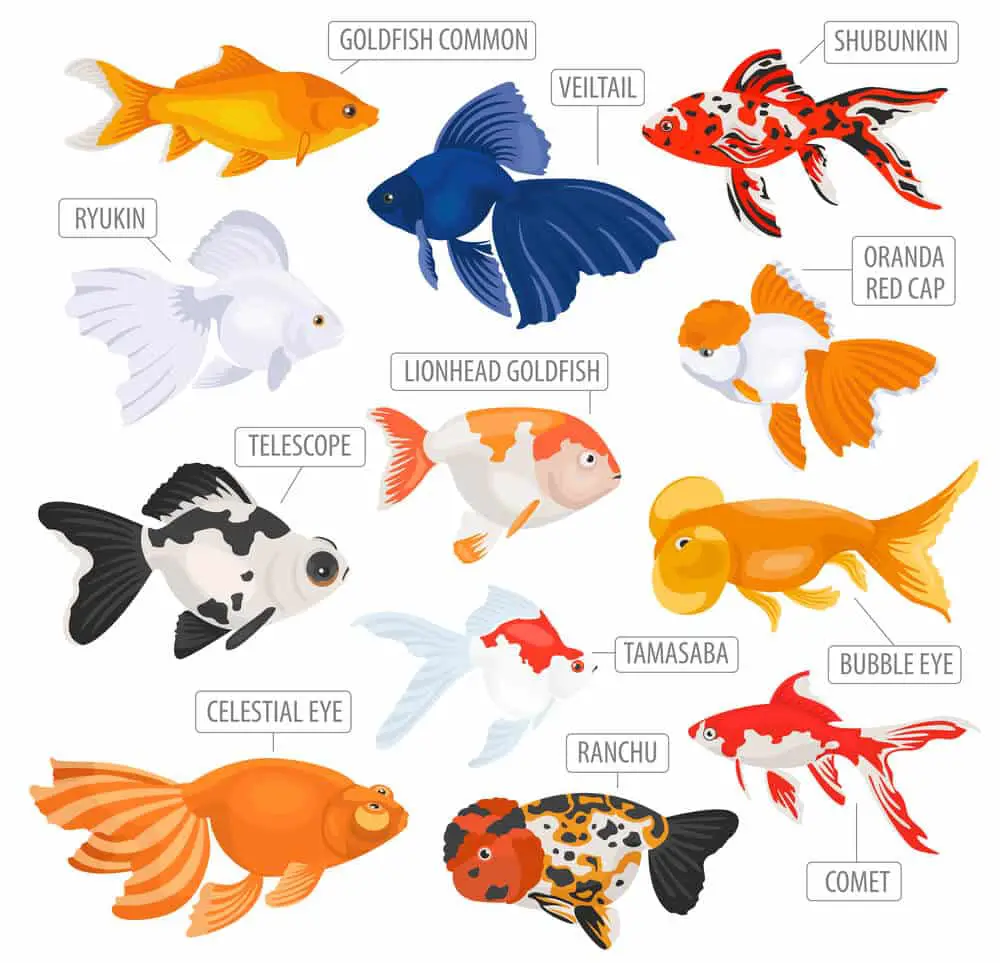
Here are some of the fancy goldfish types you need to know:
- Fantail Goldfish
- Bubble Eye Goldfish
- Oranda Goldfish
- Ranchu Goldfish
- Telescope Eye Goldfish
- Black Moor Goldfish
- Ryukin Goldfish
The thing is that fancy goldfish can’t withstand the same cold temperatures that a common goldfish can do.
Moreover, a heater has a few additional benefits for your goldfish.
Warmer Water Increases Goldfish Metabolism – Faster Growth
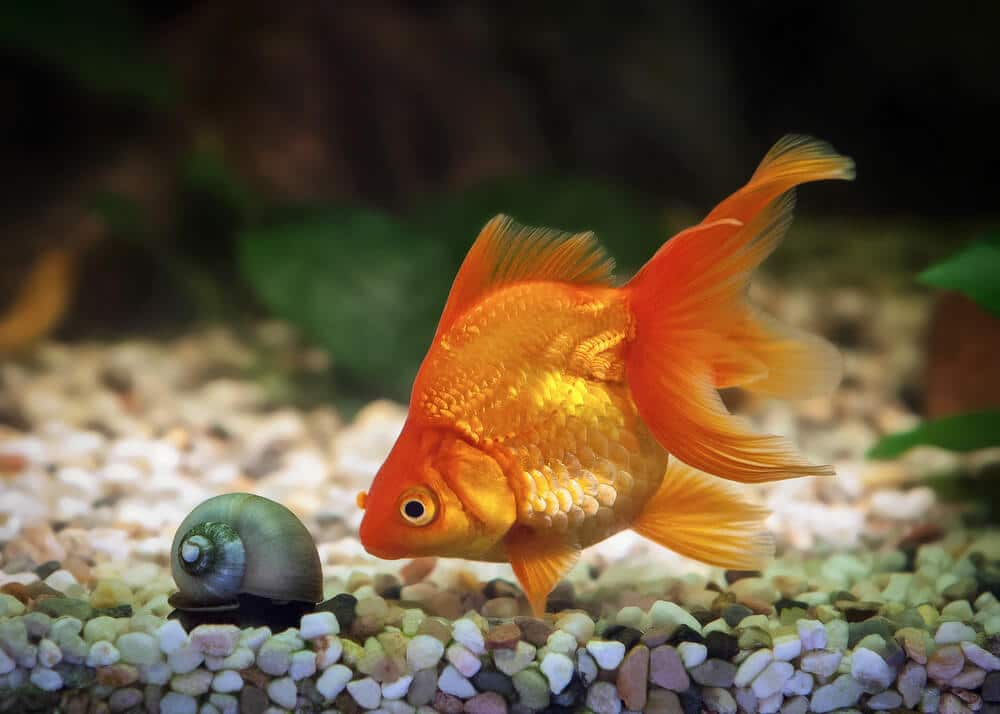
Metabolism refers to the chemical processes that happen inside a living organism that is necessary to maintain its life.
Whenever temperature increases, the metabolism also increases in most fish species. On the other hand, the metabolic rates of fish decrease by cold temperatures, which further decreases their foraging, digesting, and predator-avoiding capabilities.[2]
So if you want to ensure your goldfish eats and digests food, consumes nutrition, and thus grows faster, keeping them in warmer water using a heater can help.
Related Read: Best Aquarium Heater For 5 Gallon Tank
Warmer Water Improves Immunity – Can Fight Infection Better
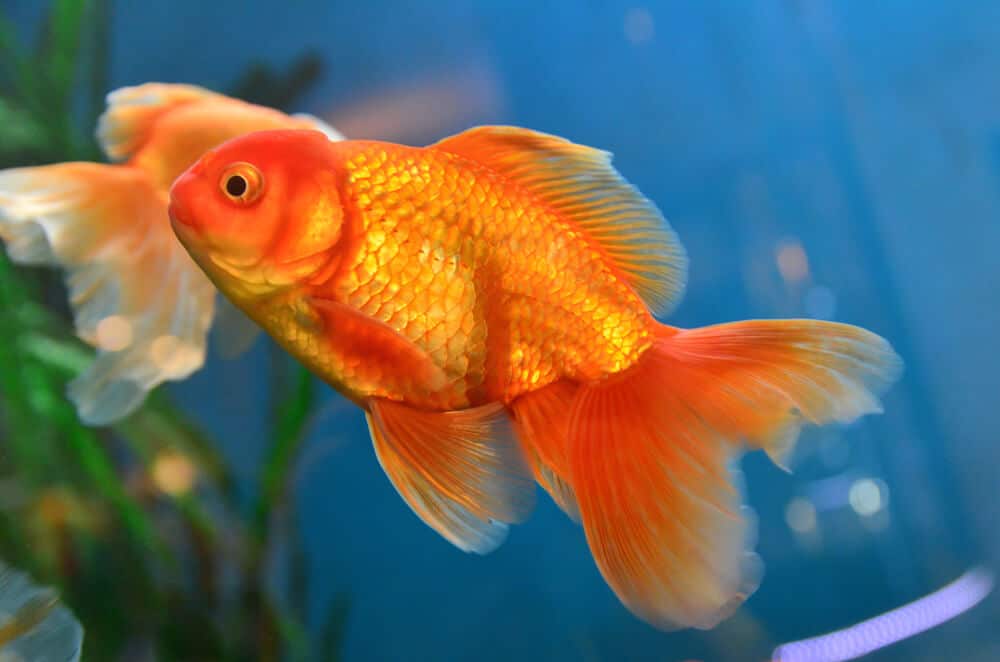
Now, metabolism and immunity are closely related. Metabolism is the process by which a body converts what it consumes into the energy it needs to work.
Immunity refers to the ability of the body to fight against pathogens. A strong immune response depends on energy.
So when your goldfish metabolism is high (in slightly warmer conditions with the help of a heater), their immunity will also be high. With better immunity, your goldfish can better fight off infections.
Moreover, another added benefit with slightly warmer temperatures is less likely to have a swim bladder disorder.
In the swim bladder disorder, the swim bladder of the fish doesn’t work properly; as a result, the fish will start swimming upside-down and show buoyancy-related problems.
Read Also: Why Do Fish Swim In Circles?
And swim bladder disorder is among the most common diseases of goldfish. And indigestion can also lead to this condition in the goldfish.
As we saw previously, the metabolic rates reduce in colder conditions and decrease the digestion capabilities. So by slightly increasing the temperature, you will increase their metabolism and thus reduce the chances of such problems.
Final Thoughts
There’s no significant drawback to using an aquarium heater at lower temperatures – that matches the ideal temperature range for goldfish. So why not have it? At least your goldfish could enjoy a stable environment.
That said, if you cannot arrange an aquarium heater for your goldfish, there’s nothing to worry about unless they are fancy goldfish.
To summarize, here are the reasons why it’s good to have a heater:
- Firstly, you want to have a stable temperature for your goldfish.
- You have kept fancy goldfish and worried about their health and tolerance to temperature change.
- You want to increase the metabolism of the goldfish and have better growth.
- Finally, you want to make your goldfish better immune to infections.
Here are the reasons when it would be okay even if you don’t have a heater:
- You have a common goldfish that is tolerant to colder temperatures.
- In your area, the temperature doesn’t vary much (from the ideal temperature range of goldfish) and stays mostly warm.
So I hope now you have a complete idea of what will be best for your goldfish.
Read Next: Are Goldfish Bottom Feeders? (Sinking Vs. Floating Food)
Citations:
- Ford, T., & Beitinger, T. L. (2005). Temperature tolerance in the goldfish, Carassius auratus. Journal of Thermal Biology, 30(2), 147-152.
- Fernandes, T., & McMeans, B. C. (2019). Coping with the cold: energy storage strategies for surviving winter in freshwater fish. Ecography, 42(12), 2037-2052.
Hi! I’m Praveen Ghoshal, the founder of eFishkeeping.com. Inspired by my Dad, I got interested in fishkeeping when I was a kid. Since then, I have been involved with this hobby. Currently, I have 3 fish tanks at our home, and I enjoy this hobby with my full family. Read more about me here.

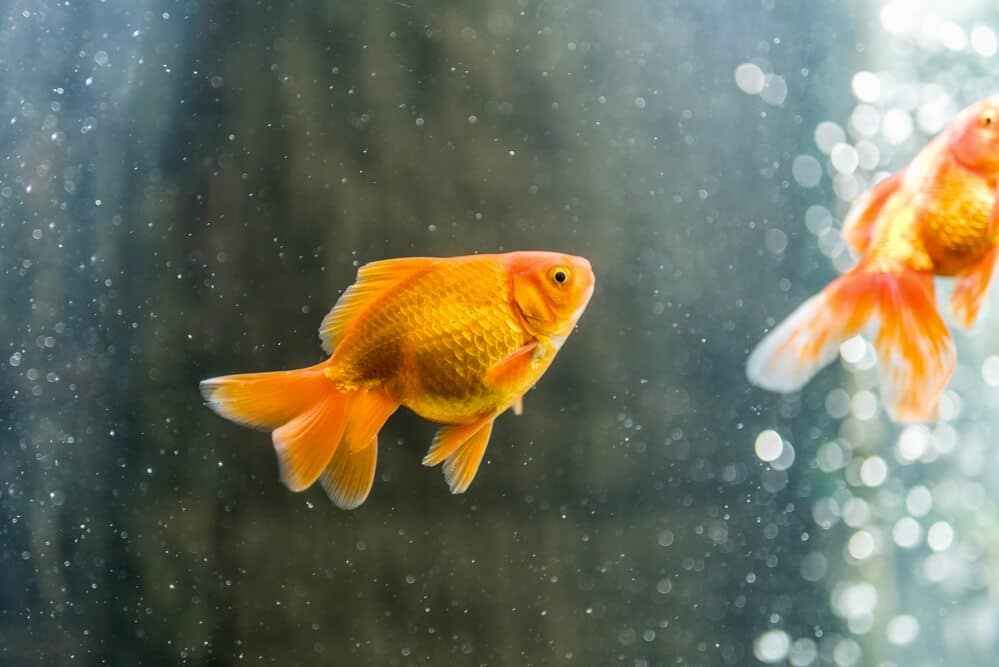



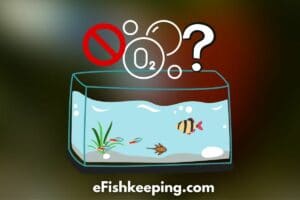


![Do Neon Tetras Die Easily? [Here’s The Truth!] do-neon-tetras-die-easily](https://efishkeeping.com/wp-content/uploads/2023/03/do-neon-tetras-die-easily-300x200.jpg)